Hometown. Siblings. Childhood memories. High school activities. Travel, spouses, friends. Life goals.
These are things you might know about your significant other, close friends. How about your coworkers?
At Buffer, we’ve discovered that sharing more of ourselves — our whole selves — is a key component in bringing team members closer together. At our past in-person retreats, we’ve called these exercises “personal stories,” and it’s become one of our favorite ways to connect. Now, we’re scaling this through personal stories written and stored digitally.
How did this first start at Buffer? How do personal stories actually work? Can you utilize this technique to bring your team (remote or not!) closer together? We’ll explore this and more!
The history of sharing our personal histories
At our very first company retreat in San Francisco, Buffer co-founders Joel and Leo shared the very first personal stories to their team of 8.
The idea was this: diving into your background (in detail) allows for your team members to hear the whole picture.
Sometimes spending uninterrupted time talking about your life’s journey can reveal a variety of things that might not otherwise come up in casual conversation.
In my opinion, there’s a side-benefit that might not be as obvious. Looking at your own story, sharing the major milestones that come to mind can put your narrative into a whole new perspective. I’ve found that I share my story a bit differently each time depending on the current things going on in my life.
How we structure and scale personal stories
At the San Francisco retreat, the team had given themselves all 5 minutes to share their stories — and learned quickly that it wasn’t quite enough time.
At following retreats, we’d dedicate 20–30 minutes for each person to share their story — and then as our team grew, we decided to split the team into groups of 5–6 and throughout the week of retreats, that same group would go to lunch each day and 1–2 people would share their stories.
On our Hawaii retreat, where we had more than 90 team members, we found this model a bit tough to scale, and we definitely missed this aspect.
A bit later in the year, Joel, had the great idea to put these in a digital format and share them in between retreats.
I’m honored to have the opportunity to interview team members (I put a list into random.org to randomize the order.) We plan for 45 minutes to chat and I record the interview, write up a profile, send a fun-facts questionnaire and we share one each week in a weekly internal newsletter.
Here’s a peek at Brian’s personal story, shared in Dropbox Paper:
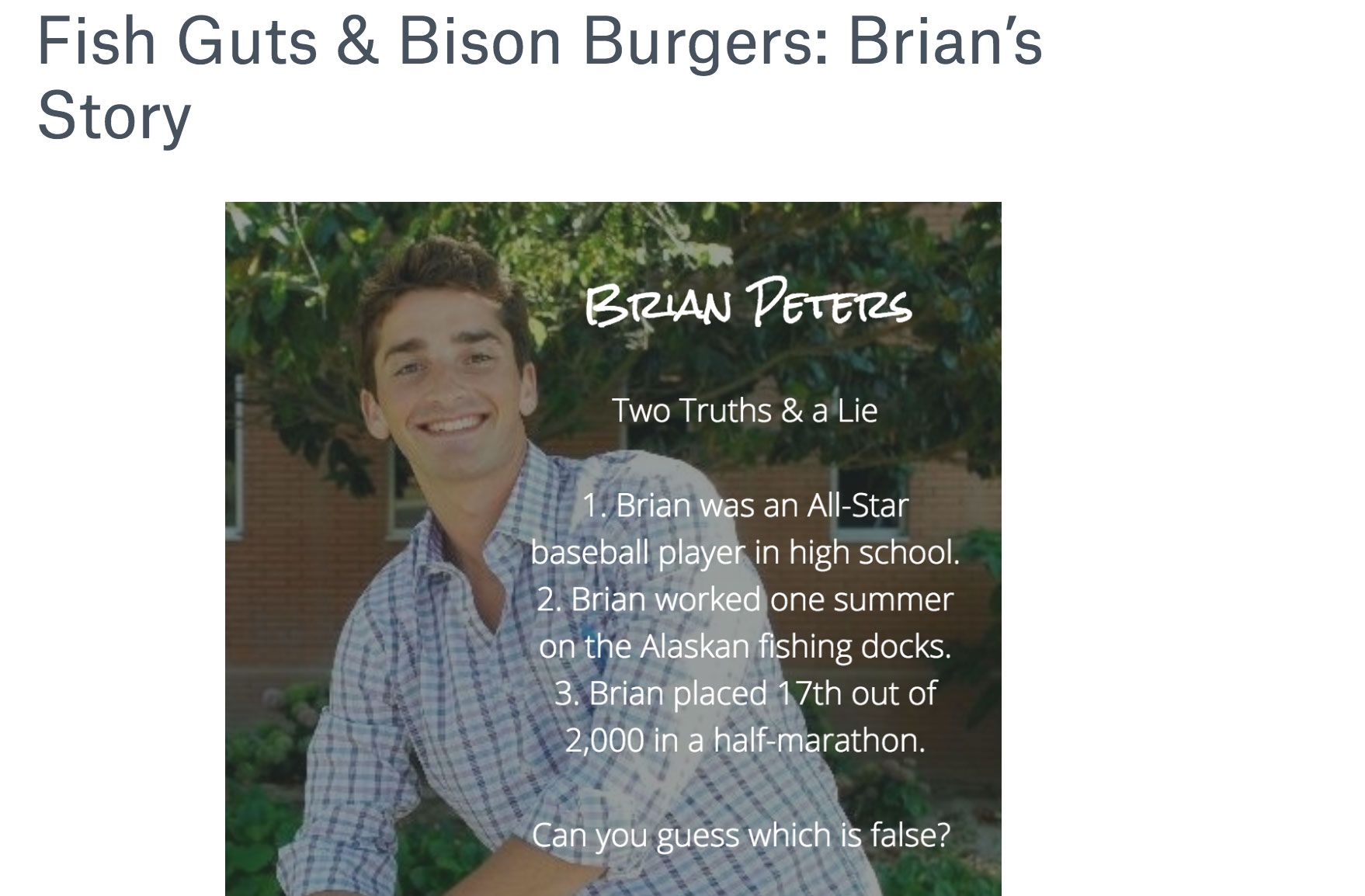
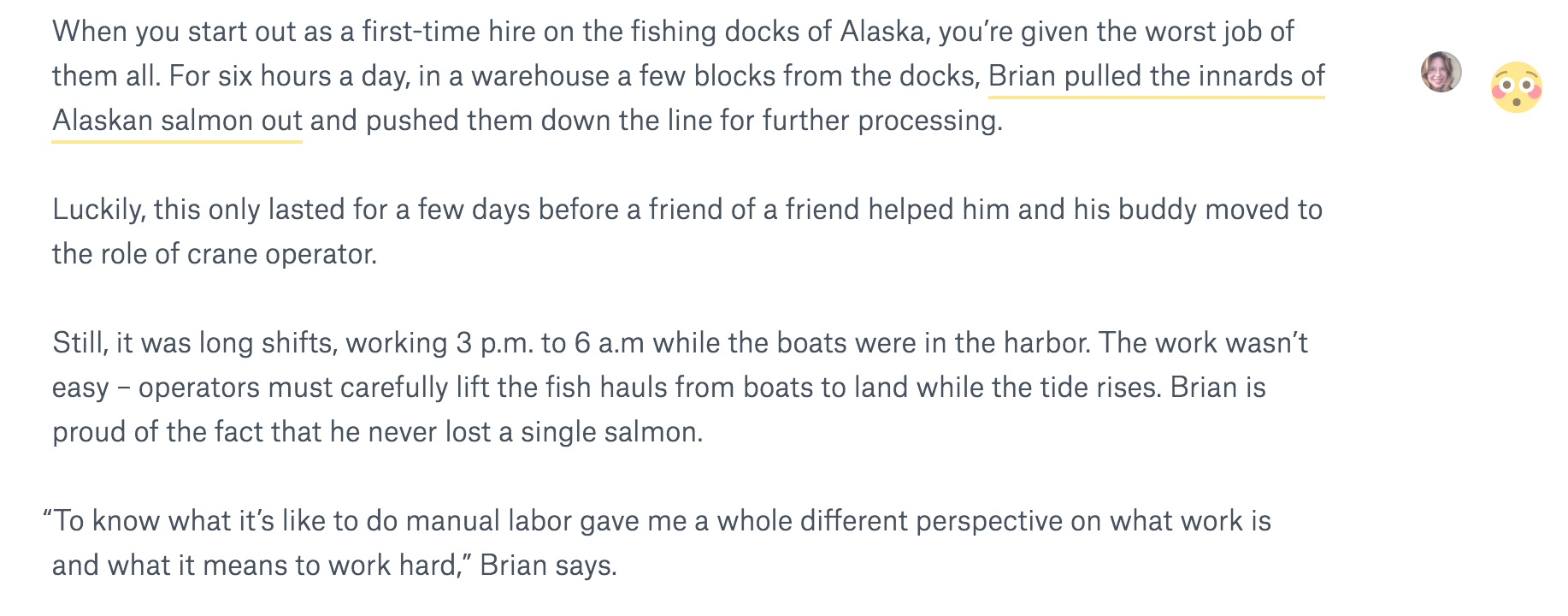
Here’s a peek of Kelly’s story!
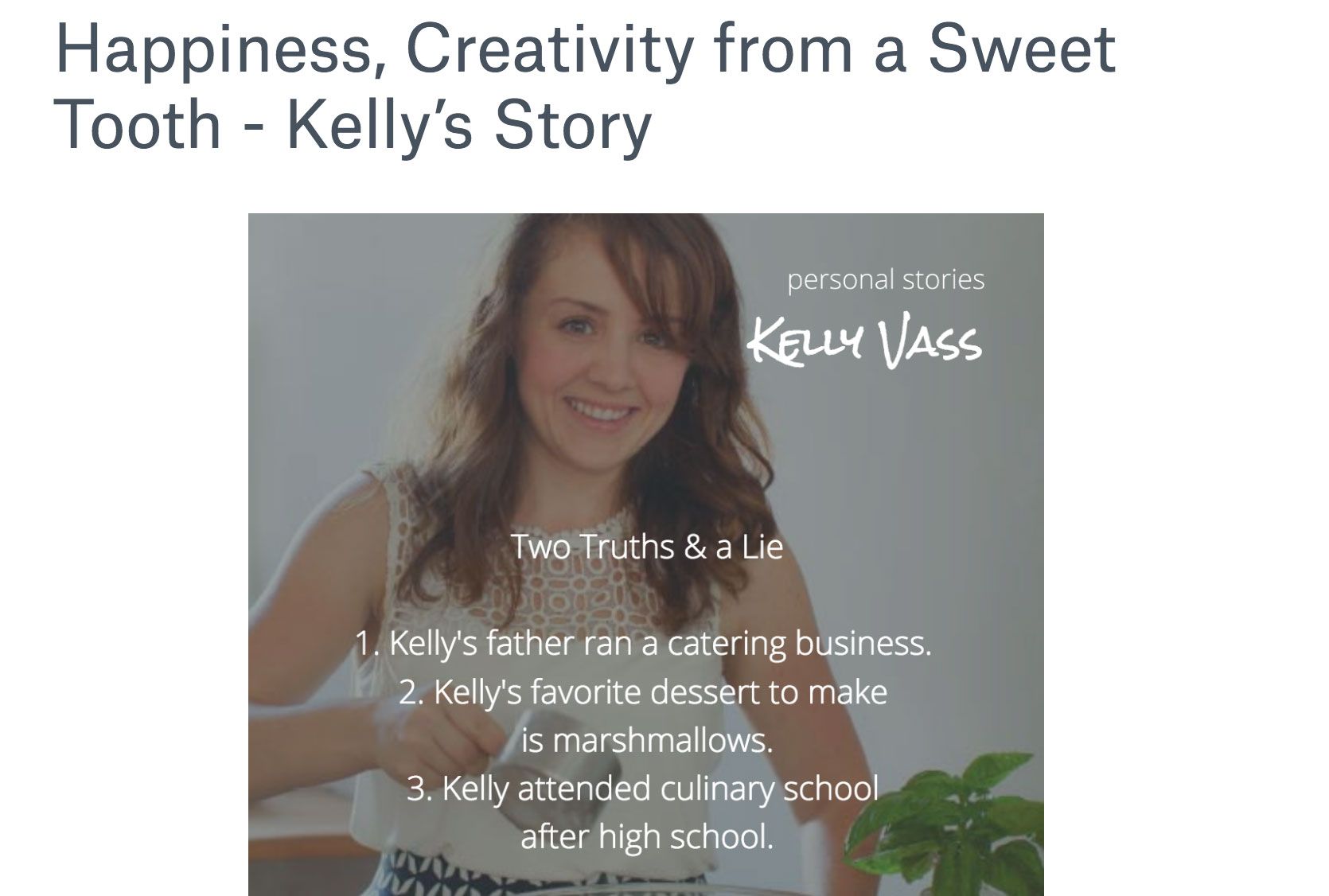

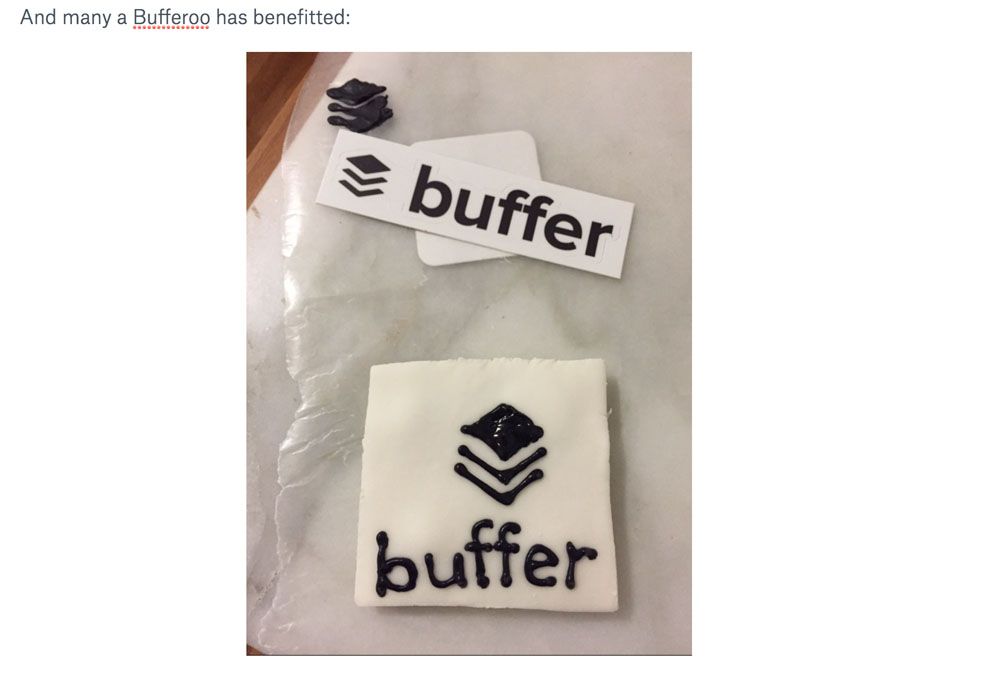
I sift through the “fun facts” and pick out some of the most relevant info. Here’s some fun things about Brian:
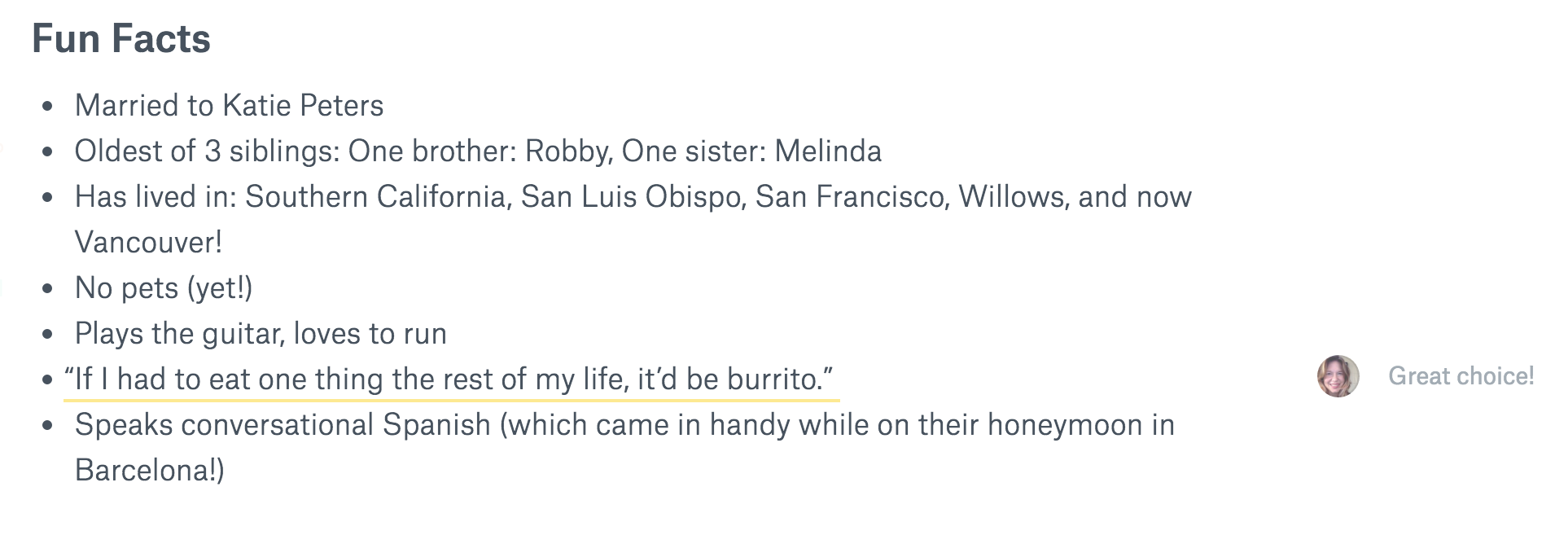
From Kelly:
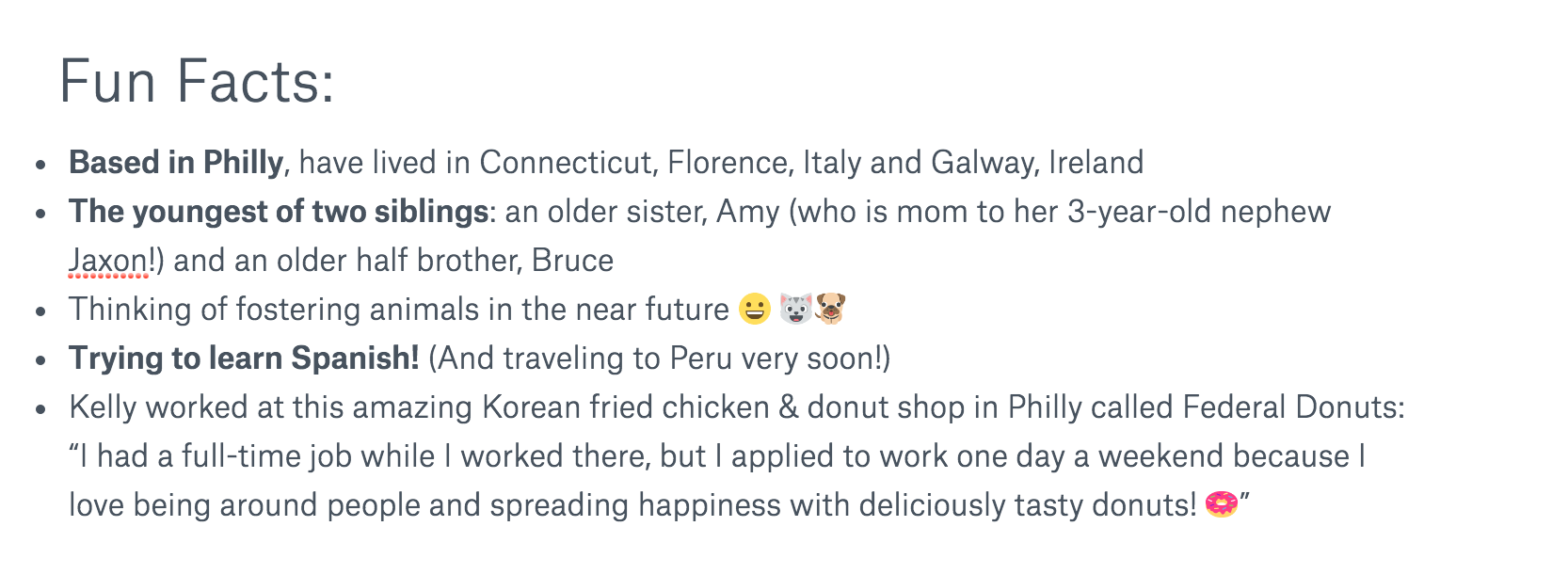
I love how each team member interprets things differently!
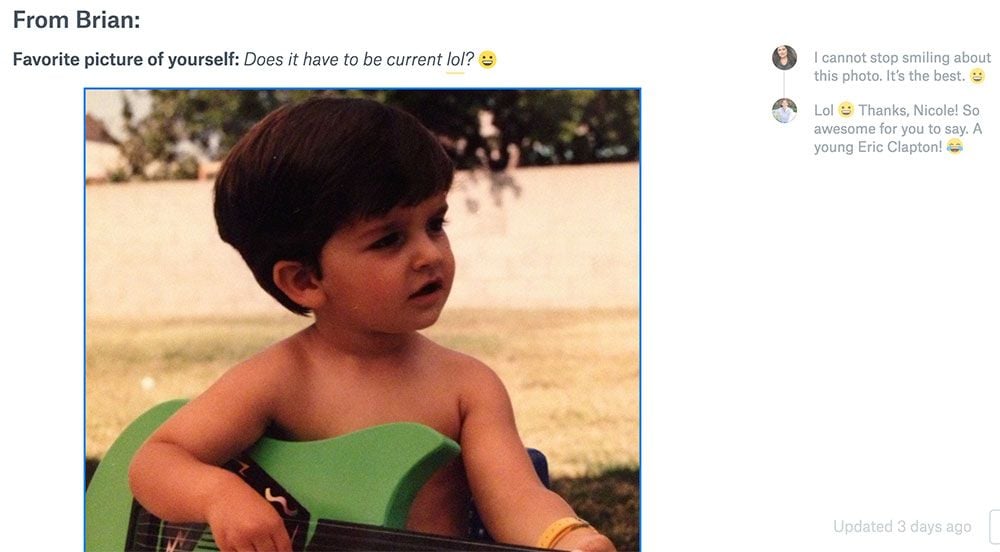
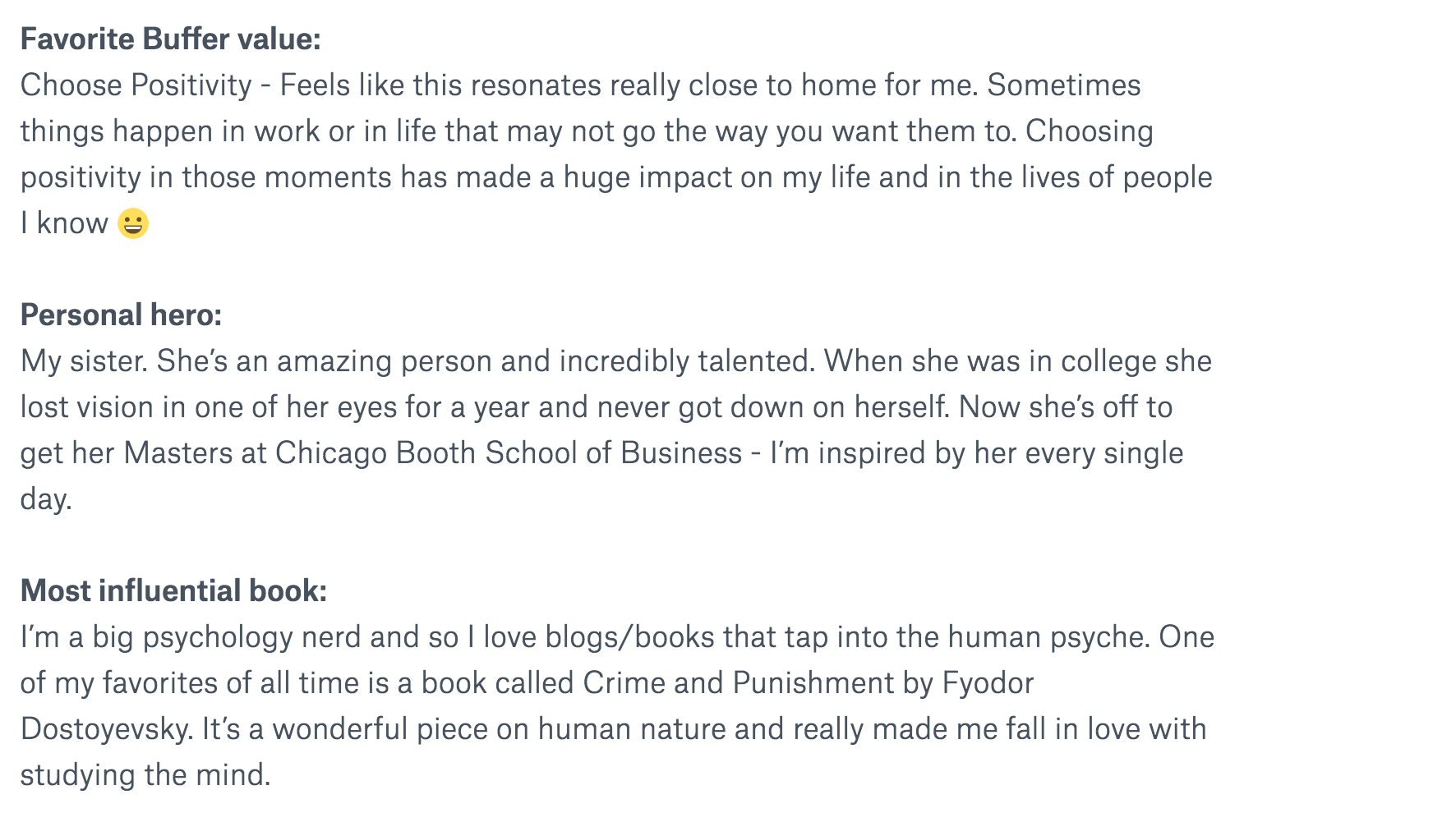
And then I include a link to the unlisted YouTube video:
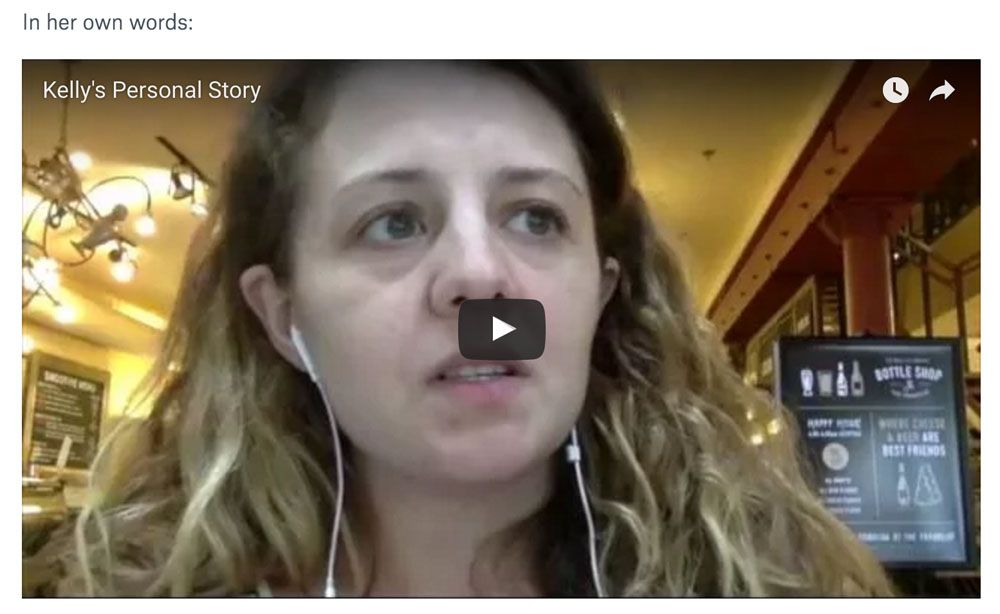
We’re continuing to experiment with the format, storage and internal promotion of these stories.
What I’ve learned from writing and listening to personal stories
Much of my life has been centered around the power of story.
I’ve always been an avid fiction and non-fiction reader and in the sixth grade, I started writing my own novels when I ran out of things to read.
I’ve written five full historical fiction manuscripts for the pure joy of writing and storytelling. (I plan to write more and would love to publish one day.)
I believe story is what drives humanity forward. Story brings everyone closer together. When you hear of a similar moment in time from someone else’s background, you’re better able to relate, to converse and empathize.
Listening and helping share the stories of our team members has been perhaps one of the most rewarding things I’ve ever done at Buffer. Their stories inspire me, encourage me and touch me in so many ways.
Why stories connect (and how to give them a shot on your team)
The best speakers use storytelling to connect to audiences and show their authentic selves.
Storytelling is a powerful technique in advertising (remember the Budweiser Clydesdale commercials with the little golden puppy during the Super Bowl? I certainly do! Cue the waterworks…)
Following a storyline activates powerful chemicals in the brain like cortisol (when we’re stressed during moments of tension) and oxytocin (during moments of happiness or cuteness.) Research has identified a formula known as the “hero’s journey” in most movies and novels — and even in most of the popular TED Talks.
Paul Zak, the founding director of the Center for Neuroeconomics Studies, shares more detail about that here:
Sharing personal stories is a lesser degree, perhaps, of these epic “heroes’ journey”, but as Zak explains in the video, sharing stories is what it means to be social creatures.
Facilitating story exchanges amongst your team can make for a stronger, more social team.
Curious to try it? Grab a few teammates who might want to opt in to the experiment and ask them out for coffee or lunch. You might be surprised at the bond that sharing these stories creates.
If you’re remote like Buffer, you could try the experiment we’re currently doing and adapt our pair calls concept for a storytelling swap. (We’ll share with you how it goes!)
Over to you
Are there any stories that have resonated with you long after they’ve been told? Do you have any details in your personal history that folks would be surprised to learn about you? We’d love to hear your thoughts in the comments!
Try Buffer for free
190,000+ creators, small businesses, and marketers use Buffer to grow their audiences every month.



